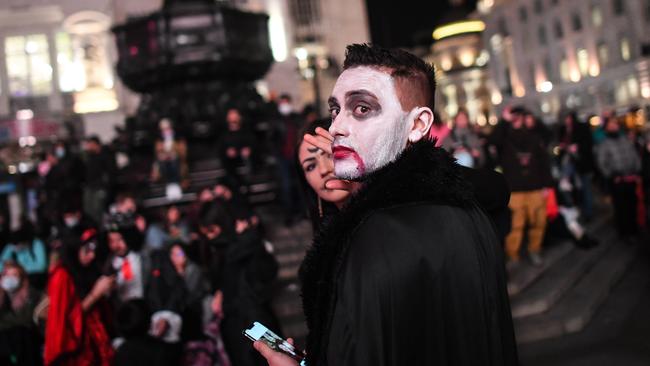Why did the UK’s new lockdown take so long – and will it work?
The numbers were rising, the warnings were dire. By Saturday it can scarcely have come as a surprise that the British government was out of ideas.

The numbers were rising, the warnings were dire. By Saturday it can scarcely have come as a surprise that the British government was out of ideas. Back to a national lockdown we are headed for what sounds like round two of full-scale, hardcore but potentially lifesaving social and economic misery.
How did it come to this?
Wasn’t the whole point of the UK government’s three-tier, locally targeted virus containment strategy to avoid a “blanket” crackdown that would punish the careful, inflame the resentful and wreck whatever is left of the economy?
“No government can claim they have been taken by surprise by the virulence of the second wave,” said Sir Jeremy Farrar, director of the Wellcome Trust and one of Britain’s leading specialists in infectious diseases. “The trajectory has been clear since at least the start of September in Europe and in reality since mid-July. The best time to act was a month ago. The second best time is now.”
How did the threat change so fast?
It was not only Britain that got caught out by the scale of the second wave of infection. Countries across Europe have been tightening restrictions for weeks. Statisticians and epidemiologists have been warning since late September that the end of the summer holidays and the onset of colder weather were fanning an exponential spread.
There is evidence that economy-boosting measures introduced after the first round of lockdowns in the spring encouraged the kind of mingling on which disease transmission thrives – social gatherings, visits to bars and restaurants, travel abroad.
As long as people were mostly meeting outdoors, the virus seemed to be contained. As the weather changed, numbers soared. On September 1, there were 50 patients with confirmed COVID on ventilators in English intensive care units. Last Wednesday there were 788.
In despairing tweets posted on Friday evening as reports of a second lockdown emerged, Farrar laid out the reality of the data. “Looking at figures today is like looking in a rear-view mirror,” he wrote.
“We won’t see the very sad consequences of the level the virus is transmitting today until the start of December.”

What happens next?
It has long been Boris Johnson’s concern that the hard part of a lockdown isn’t getting in – it is getting out. The cold months may stretch into next year. Partial measures have not been working.
Only on Friday, Dominic Raab, the foreign secretary, insisted that the government wanted to avoid a “blanket” approach in favour of targeted measures, even as Mark Drakeford, the Welsh first minister, said his government wanted a simple set of rules in all parts of Wales.
The hope now is that one set of rules will be less confusing. The unspoken fear is that locking down the whole of England is counterproductive. All the push and pull has led to delay at a time when most epidemiologists argue that rapid response was most required.
“Dead people are not economically productive,” noted Charlotte Summers, a lecturer in intensive care medicine at Cambridge University.
“Every day we delay, more people are becoming infected, the scale of the problem is growing and harsher measures will be needed.”
Why will schools stay open?
The evidence from countries around the world is overwhelming: “Schools are not hot spots for coronavirus infections,” a study in Nature magazine concluded last week. “When outbreaks do occur, they mostly result in only a small number of people becoming ill.”
The most notable findings come from Italy, which reopened 65,000 schools in September despite rising numbers of Covid cases in the adult population. The Nature study found that after a month of normal classes only 1,212 schools experienced outbreaks and in 93 per cent of those only a single infection was reported. Only one high school had a cluster of more than 10 infections.
English data has shown that adult staff are more likely to be infected than children, while German studies indicate that infections are less common in children aged six to 10 than in older children or adults. Scientists are still uncertain as to how the virus acts in children, but most countries have concluded that the low risk of serious illness is easily outweighed by the educational and mental health benefits of keeping children in class.
Is there anything more the UK should do?
Several European countries, including Belgium, France and Germany, have introduced tougher curfews, forbidding all movement for most hours of the night. Slovakia has embarked on an ambitious plan to test its entire population of four million over this and next weekend. Some epidemiologists believe that Britain should shut its borders to all international travel, but these options appear neither likely nor feasible.
“Nobody ‘wants’ a lockdown, myself very much included,” said Farrar.
“Sadly, there is now no easy path ahead, just the least bad option. To bring COVID-19 under control, we have to act now. The virus will not wait for us.”
What if it doesn’t work?
Johnson hopes for a “tiered” exit in which each region is judged on its progress and released into a lower level of restrictions. The local rate of infection, R, will be the key.
Liberating one region at a time could be the most divisive moment yet for the prime minister.





To join the conversation, please log in. Don't have an account? Register
Join the conversation, you are commenting as Logout